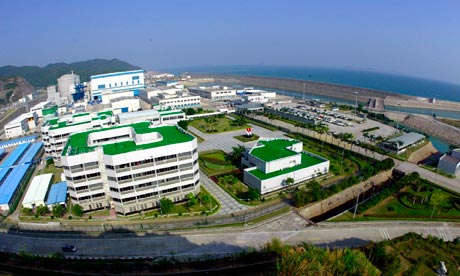When are we going to admit that we are sitting on a time bomb. Nuclear power was always a dumb idea…though pushed in part by rocket scientists…and now it is a plague. How else do you explain my waking up to these 2 headlines on the same day?
http://af.reuters.com/article/energyOilNews/idAFN1E75R19920110628
New Mexico aims to protect US nuclear lab from fire
Tue Jun 28, 2011 6:00pm GMT
Nuclear weapons lab closes due to fire danger
* Fire has potential to double or triple in size
By Zelie Pollon
SANTA FE, N.M., June 28 (Reuters) – New Mexico officials raced on Tuesday to bring in more fire crews and equipment including radiation monitors as an out-of-control wildfire raged near the preeminent U.S. nuclear weapons laboratory.
Firefighters managed to keep flames off Los Alamos National Laboratory property throughout the night on Monday as the blaze continued to grow, reaching 60,741 acres (24,580 hectares), said Lawrence Lujan, a spokesman for the Santa Fe National Forest.
The laboratory will remain closed on Tuesday and Wednesday due to fire danger, lab spokesman Kevin Roark told Reuters.
Fire officials said the so-called Las Conchas blaze had the potential to double or triple in size. Several towns are under mandatory evacuation, including the nearby city of Los Alamos, with a population of around 12,000.
Los Alamos National Laboratory was established at the end of World War II to house the top secret Manhattan Project to build the first atomic bomb. It still serves as home to the nation’s largest nuclear weapons cache.
Situated on a hilltop, 35 miles (56 km) northeast of Santa Fe, lab property covers 36 square miles (38 square km). Today the lab employees nearly 12,000 people in a range of research and development areas. Continued…
:}
Please read more but it will scare you to death how close to an actual disaster we came. Is this one in the making?
http://www.allheadlinenews.com/articles/90052753?Missouri%20River%20flood%20water%20threatens%20Nebraska%20nuclear%20power%20plants
Missouri River flood water threatens Nebraska nuclear power plants
Because of residents’ worry of a nuclear disaster, rumors about the true conditions of the two plants circulate in the state.
The rising Missouri River flood water continues to threaten the two power plants in Nebraska. To assess the situation, the U.S. Nuclear Regulatory Commission Chairman Gregory Jaczko visited the Fort Calhoun plant on Monday morning.

The Fort Calhoun Nuclear Station, located 20 miles north of Omaha, is one of the two nuclear plants in the state being monitored by the NRC because of the threats of inundation from the Missouri River.
The Fort Calhoun plant has been closed since April for refueling. Its parking lot is flooded, plant employees need to walk on a catwalk to reach the facility. An inflatable water-filled barrier that surrounds the plant was punctured by machinery on Sunday, but the plant operators assured residents that key areas of the facility are not in danger of submersion.
However, plant employees briefly switched to diesel backup generators to keep the nuclear fuel at the site cool because the flood water got too close to electrical transformers.
The other plant, Cooper Nuclear Station, is on higher ground and continues to operate. However, reports said the station is close to shutting down because flood water had reached critical levels.
Because of residents’ worry of a nuclear disaster, rumors about the true conditions of the two plants circulate in the state.
The rumors include an alleged two-mile radius no-fly zone declared by the Federal Aviation Administration on the air space around Fort Calhoun because of a radiation leak and the declaration of a Level 4 emergency at the facility.
The plant operators denied the reports.
:}
Did I mention that there now appears to be water leaking into the basement of the facility. More tomorrow if we are still alive.
:}









